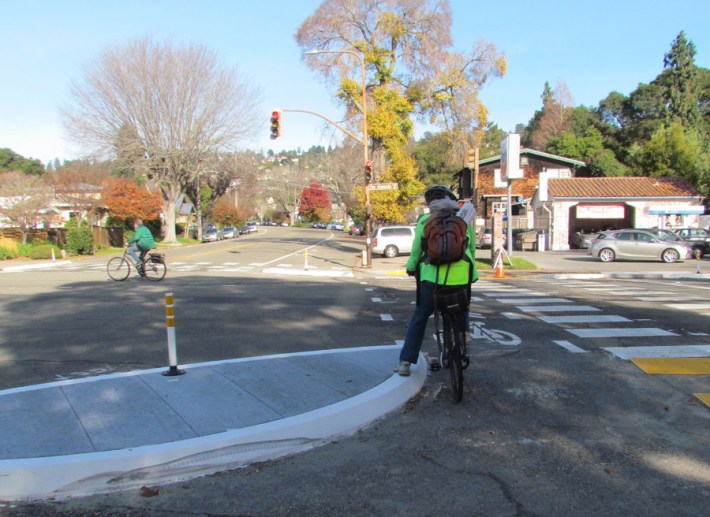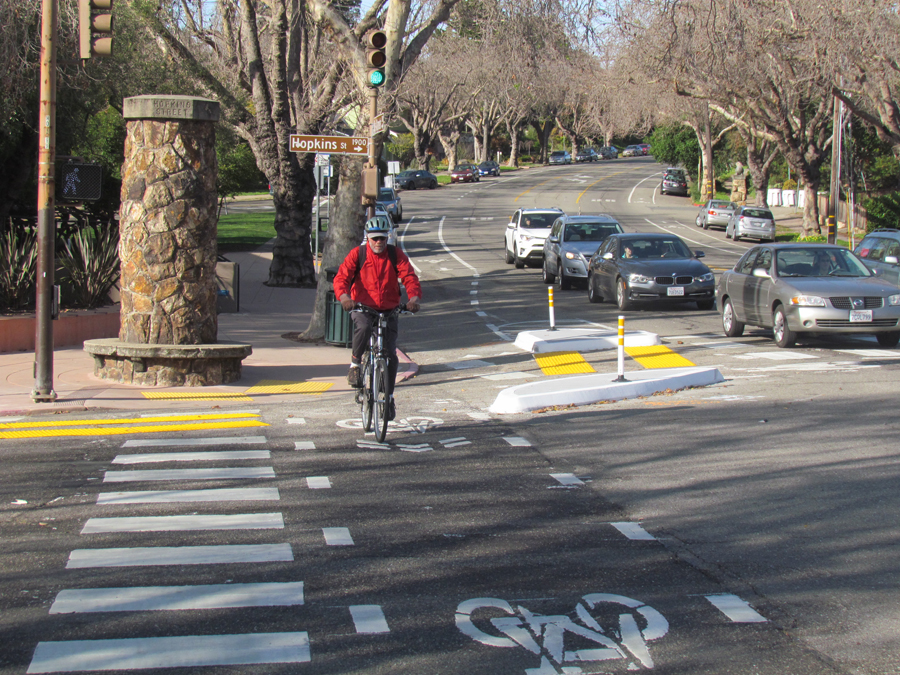Good bike infrastructure can be simpler and less expensive to build than planners realize. A great example of this just got built in Berkeley, where a Safe Routes to Schools project hit a snag, and in the process of solving the problem got better—and cheaper.
The original project was to add pedestrian bulb-outs at the corner of Hopkins and The Alameda, a wide intersection next to a library and near several schools. The idea was to narrow the crossing distance and in the process get cars navigating the turns to slow down.
The project got state funding in 2010, but was delayed because drainage at that intersection is complicated. The two streets that cross here go up hill and down, and there is a wide crown lifting the center of the intersection higher than the corners.
Engineers had not yet come up with a solution, and the grant had to be spent or it would be rescinded. City staff, who had been thinking about ways to let water drain through the intersection along its existing route—between the curb and the new bulb-outs—realized that if they widened the waterway it could become a protected bike lane.

And voila, for a lot less money—not to mention concrete—than a standard bulb-out, the city created a protected intersection for bikes and pedestrians. New “floating islands” narrow the intersection a bit, forcing right-turning cars to slow down and turn more sharply.
They also shift the angle at which drivers approach the pedestrian crossing and bike path after the turn. That brings bikes and pedestrians more directly in front of the drivers' field of vision, and thus harder to ignore.
“The city may need to add a flex post or two between the crosswalk and the bike crossing,” said Bike East Bay Advocacy Dave Campbell. “I've seen some cars trying to make the shortcut, between the bulb and the corner. They haven't got used to it yet.”
Campbell said some bike riders have commented that the islands are right in the middle of the path they used to take across the intersection, so that they have to veer outside it, or slightly to the right into the bike lane, and slow down. “The answer is that, yes, you do need to slow down,” said Campbell.
The intersection turned out to be a creative, easily placed way to slow down cars at an intersection that sees a lot of traffic. But it's not finished yet.
“Ultimately we want to match the intersection with protected bike lanes,” said Campbell. Berkeley, he added, is just beginning to see the value of protected bike lanes, having built one earlier this year along Fulton Street.






